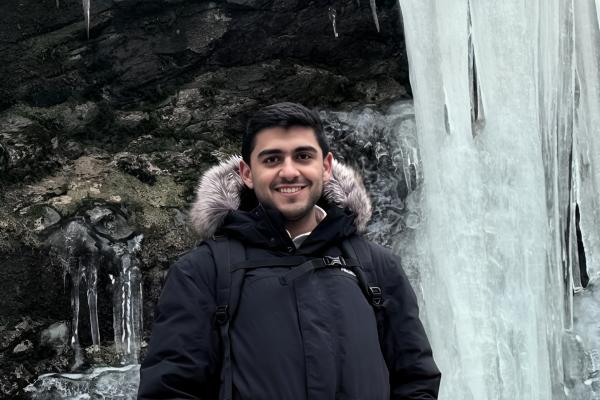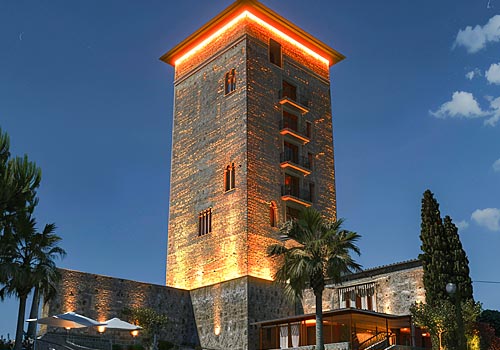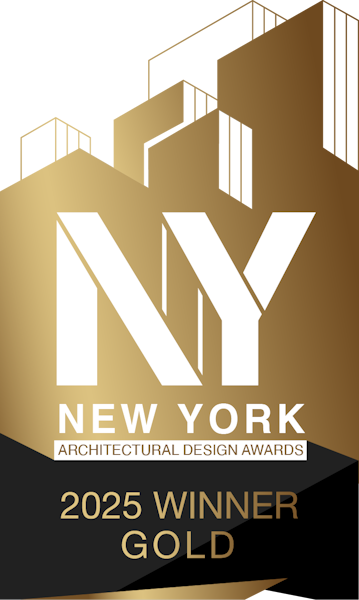
Interview
Avinash Chaudhary
Politecnico Di Milano, United States
Avinash Chaudhary is an architectural lighting designer with a background in electrical engineering, known for creating emotionally intelligent lighting that bridges precision and poetics. His practice focuses on context-driven, sustainable designs that allow architecture to speak through light, especially in heritage and hospitality projects.
1 | Congratulations on your achievement! What inspired you to submit this project for the NY Architectural Design Awards?
Thank you! The inspiration to submit Borgo di Farfa came from a deep belief that light is not just a tool of visibility, but a medium of memory, atmosphere, and cultural storytelling — especially in heritage contexts. This project, set in a centuries-old hermetical village in Italy, was an opportunity to use lighting as a way to reveal architectural character while honoring spiritual and historical layers. We worked with extreme sensitivity — every color temperature, angle, and intensity was chosen not just for technical performance, but to support a narrative: from warm, communal thresholds to cool, sacred thresholds at the abbey. I felt that the NY Architectural Design Awards — known for recognizing innovation and multidisciplinary integration — would appreciate the balance we struck between emotional storytelling, historical preservation, and modern lighting technology. Submitting this project was a way to celebrate the power of design in quiet, culturally meaningful spaces, where light becomes the voice of place.
2 | What is the defining concept or vision behind your award-winning project?
The defining concept behind the Borgo di Farfa lighting design was a symbolic journey through light — using color temperature and spatial rhythm to guide visitors from the everyday world into a sacred, introspective experience. We envisioned the village as a narrative sequence, where lighting becomes a form of spatial storytelling. At the entrance, we used warm, amber-toned light to evoke community, welcome, and the rhythm of daily life. As one moves deeper toward the Abbey of Farfa, the light gradually shifts to cooler, purer tones, symbolizing clarity, contemplation, and spirituality. Technically, the design emphasized non-intrusive integration, using discreet fixtures and precision optics to reveal textures, enhance depth, and respect the site's historic integrity. Catenary systems and recessed uplights were chosen not just for aesthetics, but to echo traditional village lighting typologies in a contemporary way. Overall, the vision was to amplify the identity of Farfa through light — not to overpower it — and to create a nocturnal atmosphere that feels timeless, respectful, and emotionally resonant.
3 | Could you briefly share your journey into architecture and what inspired you to pursue this field?
Absolutely. My journey into architecture — and eventually into architectural lighting design — began with a fascination for how spaces make us feel, not just how they look. Early on, I was drawn to environments that left a lasting emotional impact: sacred spaces, old cities lit by sodium lamps, even infrastructure with a quiet sense of order and rhythm. I trained as an electrical engineer, which gave me a strong foundation in systems, performance, and technical rigor. But over time, I found myself gravitating toward the expressive side of design — how light could transform space, evoke emotion, and bridge the technical with the poetic. That led me to specialize in architectural lighting design, where I could combine engineering knowledge with a creative approach to form, heritage, and human experience. Projects like Borgo di Farfa reaffirmed why I chose this path: it’s a field where light becomes architecture’s voice after dark — subtle, symbolic, and powerful.
4 | How would you describe the mission or goals of your company or studio?
The core mission of my practice is to create emotionally intelligent lighting — design that is not only technically precise, but also deeply responsive to context, culture, and human experience. Whether working on heritage villages, hospitality spaces, or large-scale infrastructure, the goal is always the same: to use light as a tool of meaning. I aim to enhance architecture without overpowering it, to reveal stories embedded in materials and spaces, and to design environments that feel intuitive, respectful, and alive after dark. At the intersection of engineering and design, my studio focuses on context-driven, sustainable, and quietly expressive lighting solutions.
5 | Were there any unexpected challenges during the design or construction phases? How did they shape the final result?
Yes, one of the most unexpected challenges during the Borgo di Farfa project was balancing the technical requirements of contemporary lighting with the sensitive historical context of the site. Working within a protected heritage village meant that every intervention had to be minimally invasive, reversible, and fully respectful of the original architecture. We faced constraints in terms of mounting options, wiring paths, and fixture visibility — especially on the stone façades and around the abbey. In many cases, we had to redesign the lighting layout multiple times to meet conservation standards while still achieving our desired visual effect. Another challenge was preserving the atmosphere of the village at night. It was important to avoid over-illumination or anything too theatrical. We had to constantly ask ourselves: What does this space need to say after dark, and how can light help it whisper — not shout? Ultimately, these limitations shaped the project in a very positive way. They pushed us to be more precise, creative, and intentional. We focused on layering light subtly, using color temperature as a narrative device, and hiding fixtures within the architecture. In the end, the constraints led to a more refined and respectful design, one that lets the village speak for itself.
6 | How does your design process usually unfold-from ideation to completion?
My design process begins with understanding the context and purpose of the space — its architecture, users, and emotional tone. From there, I develop a conceptual lighting narrative, translate it into technical solutions, and work closely with collaborators through detailing, mock-ups, and final adjustments. The goal is always to create lighting that feels intentional, integrated, and meaningful.
7 | If you had to describe the journey of this project in three words, what would they be?
Contextual, symbolic and transformative.
8 | What feedback have you received about your work that has been particularly meaningful or surprising?
One of the most meaningful pieces of feedback was that the lighting felt “invisible but unforgettable” — subtle enough not to draw attention to itself, yet powerful enough to completely transform the atmosphere. That affirmed my belief that great lighting is often felt more than seen.
9 | What does receiving this recognition mean for you, your team, or your studio?
Receiving this recognition is a powerful affirmation of our belief that thoughtful, context-driven lighting design matters. It celebrates not just the final outcome, but the care, collaboration, and vision behind it — and encourages us to keep pushing for quiet, meaningful impact in every project.
10 | How do you see this award influencing your future projects or career?
This award reinforces my commitment to designing with purpose and precision, and it opens doors to collaborate on projects that value both technical excellence and emotional depth. It gives me greater confidence to take creative risks and pursue work that leaves a lasting, thoughtful impact.
11 | What's a project or idea you've been dreaming of bringing to life, and why does it inspire you?
I’ve been dreaming of designing lighting for a remote cultural or spiritual landscape — like a desert monastery, mountain village, or pilgrimage route. These environments inspire me because they demand a deep sensitivity to nature, silence, and ritual. It’s about using light not to impress, but to honor the place, guide people gently, and create a dialogue between the built and the sacred.
12 | Where do you see the architectural field heading in the next decade, and how do you envision contributing to its evolution?
I see architecture moving toward more integrated, responsive, and sustainable environments — where lighting is no longer an afterthought, but a core part of the design narrative. Over the next decade, I hope to contribute by creating context-sensitive lighting solutions that merge technology with cultural meaning, helping spaces not just function better, but feel more human, grounded, and emotionally resonant.
13 | How do you see your designs contributing to the future of sustainable architecture?
I see lighting as a key driver of sustainable architecture — not just through energy-efficient technology, but through design decisions that reduce waste, minimize light pollution, and respect natural rhythms. My work focuses on using just enough light, in the right place, at the right time, combining thoughtful placement with smart controls to create spaces that are both environmentally responsible and experientially rich.
14 | If you could design anything, with no limits on budget or imagination, what would it be?
I would design a light-based cultural landscape — an immersive, open-air space where architecture, nature, and light tell a continuous story across time. Think of a walking path through a desert or forest where lighting shifts with seasons, rituals, or silence — no signage, no buildings, just pure sensory experience. It would be a place where light becomes the architecture itself — temporal, emotional, and deeply human.

